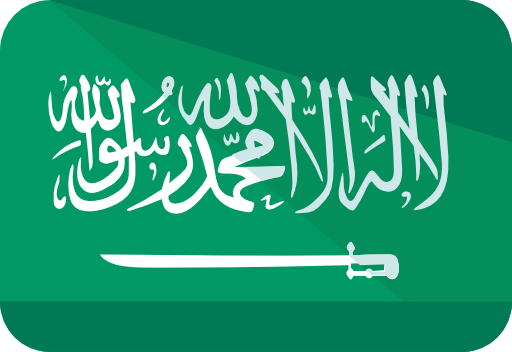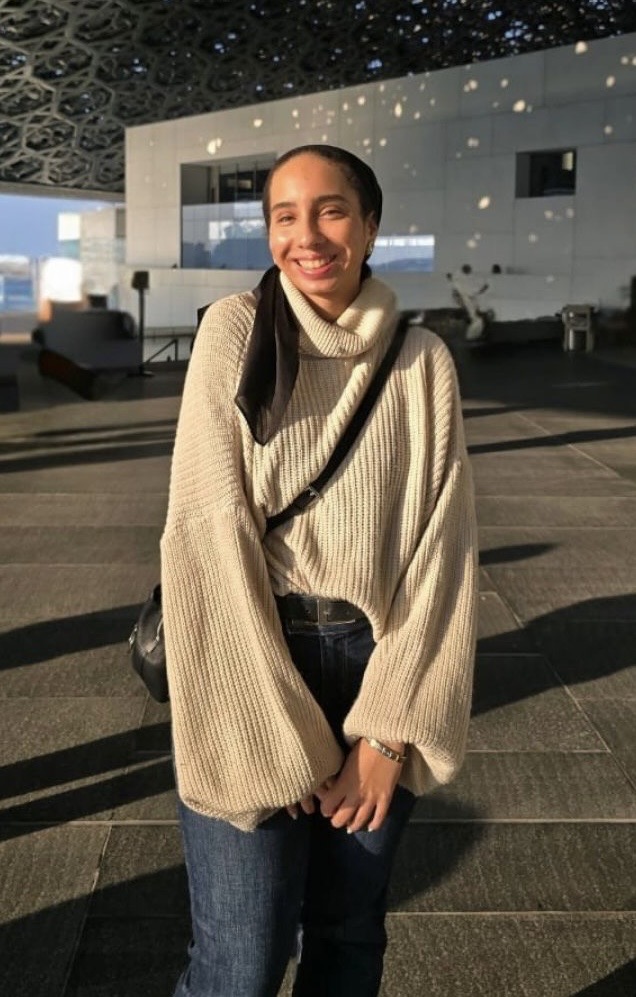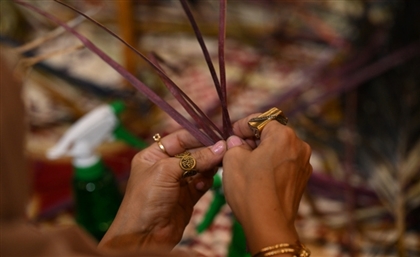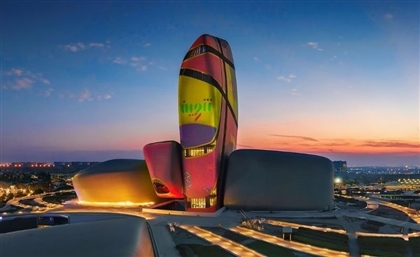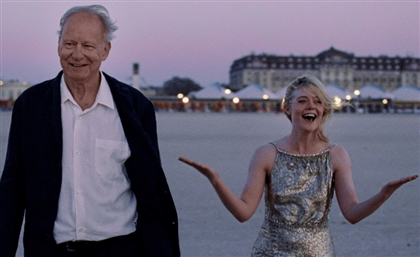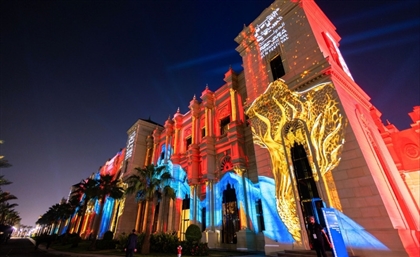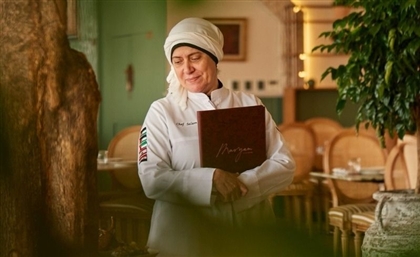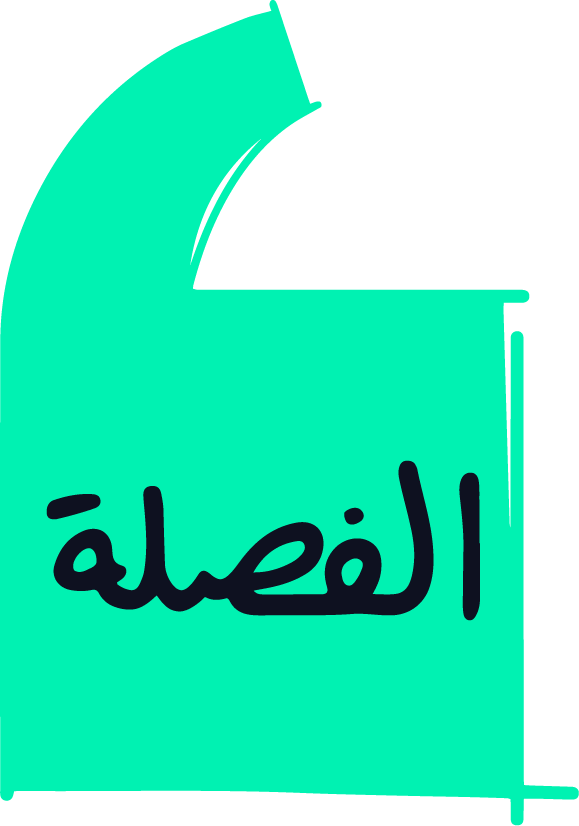Shahira Fahmy’s "Nakhla" Reflects on the Heritage of the Date Palm
Egyptian architect Shahira Fahmy presents "Nakhla" at Ithra’s Baseqat Exhibition, a woven study of craft, light and memory.
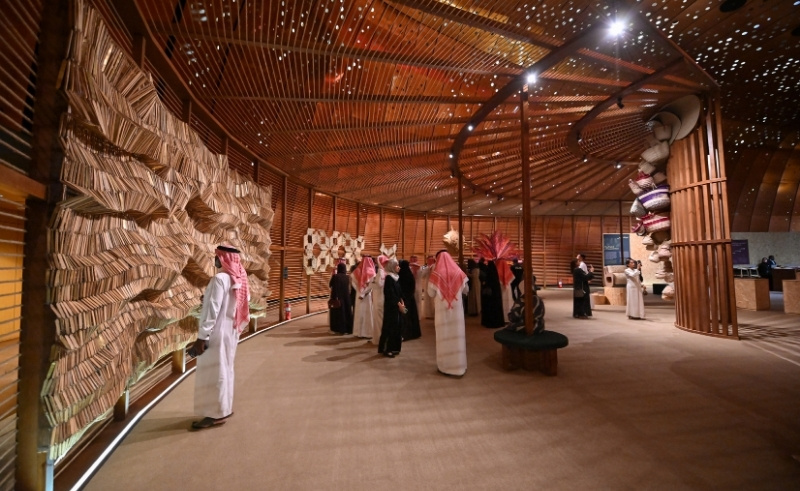
At the King Abdulaziz Center for World Culture (Ithra) in Dhahran, Egyptian architect Shahira Fahmy presents 'Nakhla', a woven palm-leaf installation that reflects on the architectural and cultural legacy of the date palm. Part of 'Baseqat: The Palm Tree Exhibition', curated by Samer Yamani and Razan Masri, the work situates craft as both memory and material, revisiting one of the region’s most enduring natural resources through the lens of contemporary design.-5bb3730b-88af-44dc-8d53-46b566f87ea2.jpg) Across the region, the date palm has long sustained life, creating shade and fertility in harsh landscapes. In 'Nakhla', its fibre becomes structure and screen, echoing the tree’s quiet environmental intelligence.
Across the region, the date palm has long sustained life, creating shade and fertility in harsh landscapes. In 'Nakhla', its fibre becomes structure and screen, echoing the tree’s quiet environmental intelligence.-8aa04dc3-6043-42ff-badc-f7d7d75aa9e4.jpg) Formed from jereed el-nakhl, or palm-leaf lace, 'Nakhla' is conceived as a living skin. Its rippling surface and intricate weave allow light to pass through in shifting patterns, animating the form and rendering the static structure seemingly alive. “It exemplifies architecture as a form of cultural expression,” Fahmy tells SceneHome, “merging craft, light, and form to re-create places of belonging. The piece becomes both bridge and transformation, linking traditions while imagining new forms of continuity.” The interplay of texture and light lends Nakhla a dynamic presence, suggesting movement even within stillness.
Formed from jereed el-nakhl, or palm-leaf lace, 'Nakhla' is conceived as a living skin. Its rippling surface and intricate weave allow light to pass through in shifting patterns, animating the form and rendering the static structure seemingly alive. “It exemplifies architecture as a form of cultural expression,” Fahmy tells SceneHome, “merging craft, light, and form to re-create places of belonging. The piece becomes both bridge and transformation, linking traditions while imagining new forms of continuity.” The interplay of texture and light lends Nakhla a dynamic presence, suggesting movement even within stillness.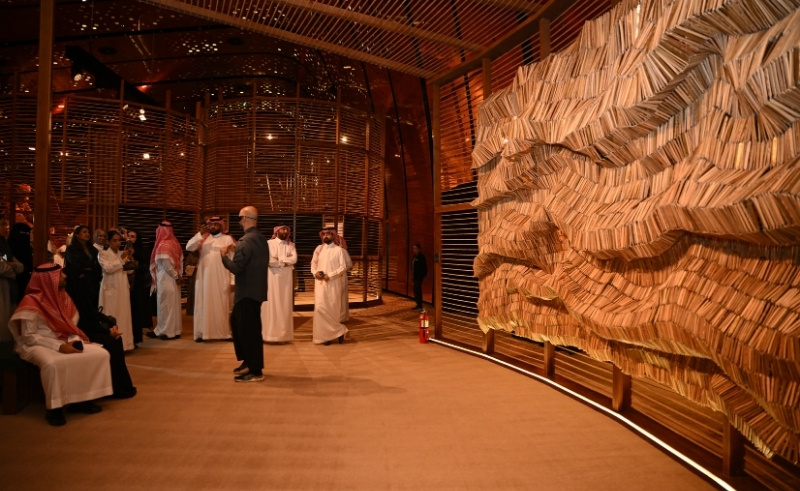
Fahmy describes 'Nakhla' as part of a dialogue between geographies and generations, extending her engagement with local materials and vernacular craft. Her earlier work at Lucida Restaurant in Cairo employed woven palm fronds to shape light and atmosphere; here, that exploration evolves into a sculptural study of continuity.-db7be389-4dbd-4549-acfa-e37bdb546beb.jpg) The exhibition situates 'Nakhla' within a broader conversation about the palm as a cultural ecological and architectural constant. Baseqat gathers 15 installations by 25 artists from across the region and beyond, reinterpreting the palm’s material and symbolic significance across six thematic zones: Oasis, Roots, Trunk, Fronds, Dates, and The Lab. Set within a spatial framework inspired by traditional areesh structures, the exhibition forms part of Ithra’s wider Khoos Initiative, a programme dedicated to reviving palm-based craft through design and artistic collaboration.
The exhibition situates 'Nakhla' within a broader conversation about the palm as a cultural ecological and architectural constant. Baseqat gathers 15 installations by 25 artists from across the region and beyond, reinterpreting the palm’s material and symbolic significance across six thematic zones: Oasis, Roots, Trunk, Fronds, Dates, and The Lab. Set within a spatial framework inspired by traditional areesh structures, the exhibition forms part of Ithra’s wider Khoos Initiative, a programme dedicated to reviving palm-based craft through design and artistic collaboration.


